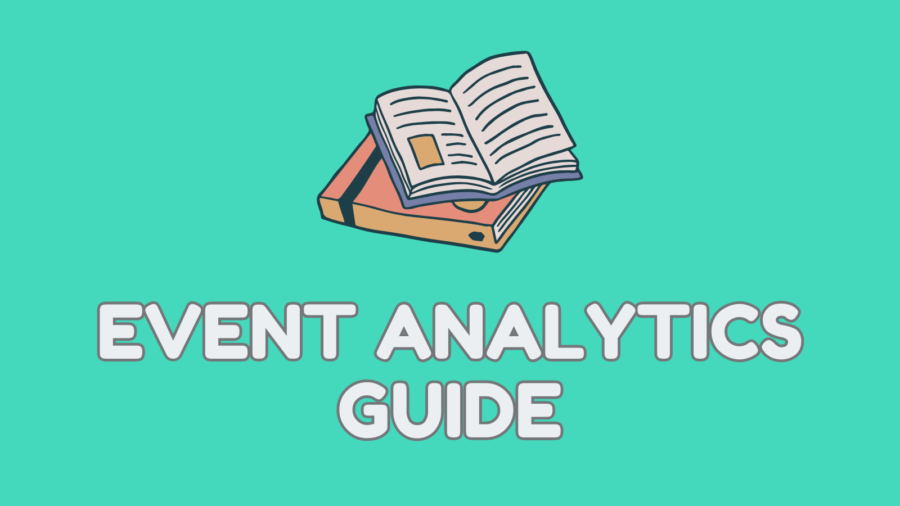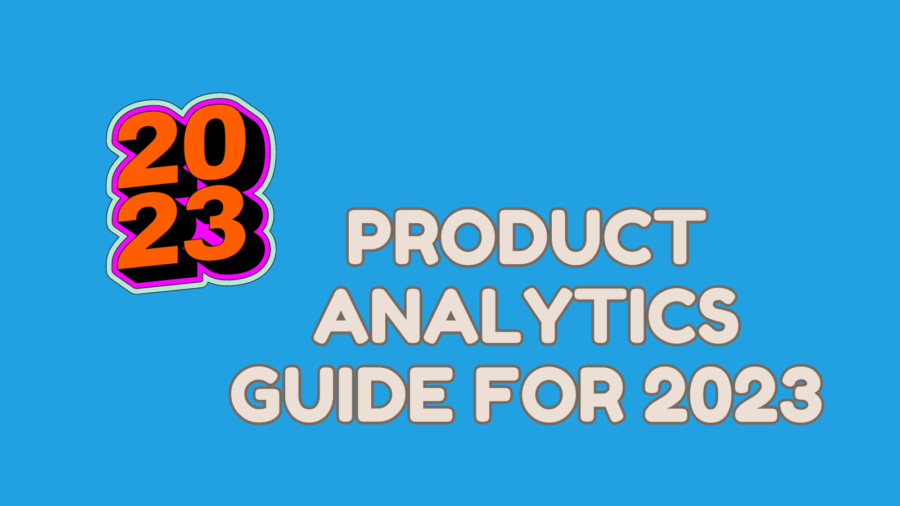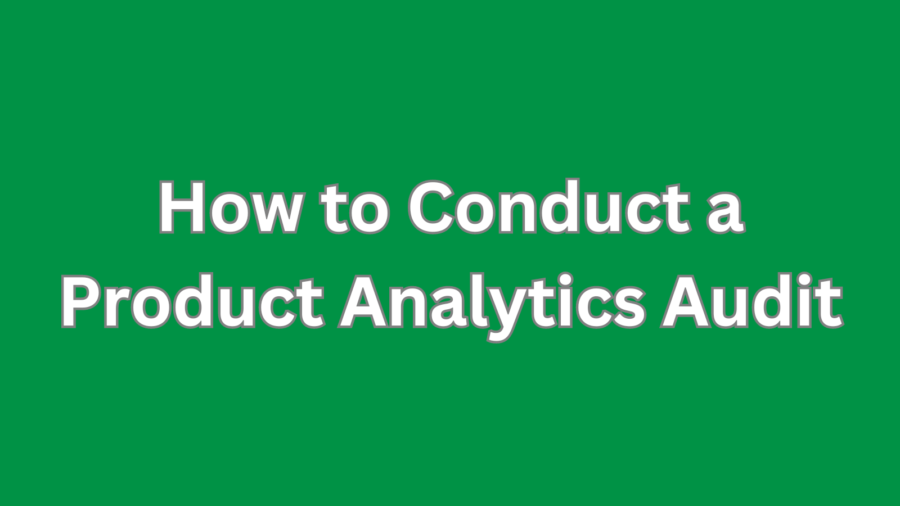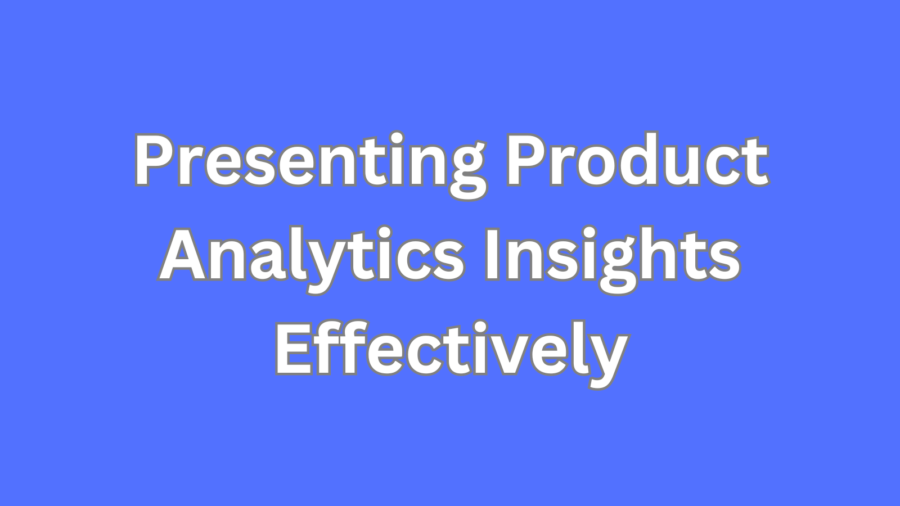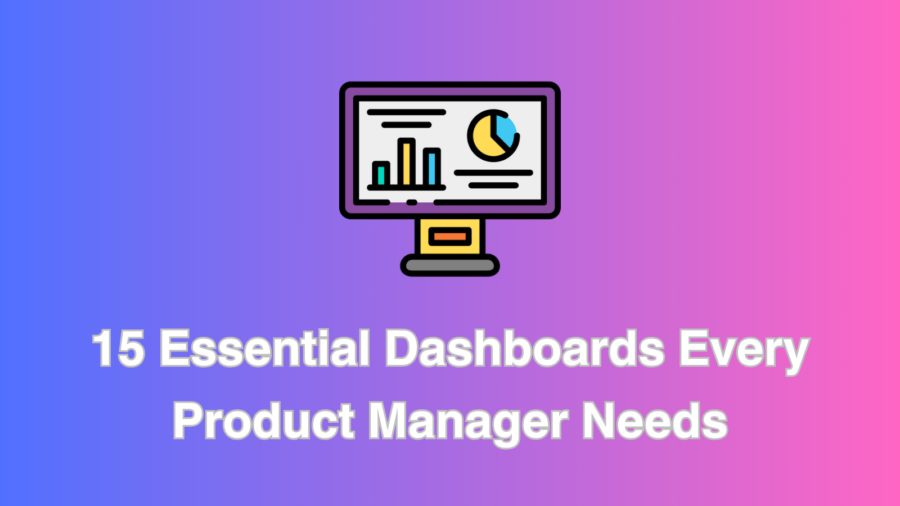Welcome to the comprehensive Event Analytics Guide for Product Managers. In this guide, we’ll
delve into the world of event analytics and how it serves as a powerhouse of insights for product managers like you. Whether you’re exploring the different types of event analytics or pondering over the best platforms to track user behavior, this guide has you covered.
Table of Contents
- What is Event Analytics?
- Importance of Event Analytics
- Types of Event Analytics
- Leveraging Event Analytics Data
- Best Event-Based Analytics Platforms
- Conclusion
What is Event Analytics?
The realm of event analytics is like a finely woven tapestry that captures the intricacies of user interactions, revealing the threads of actions and occurrences that shape the fabric of digital products and applications. It’s a dynamic dance between data and insights, providing product managers with a front-row seat to the symphony of user behavior.
At its core, event analytics is the art of meticulously capturing and discerningly analyzing your digital domain’s multifaceted spectrum of user actions. These actions are the heartbeats of user engagement, the footprints of exploration, and the breadcrumbs of user experiences. They span a broad spectrum, from the delicate cadence of user clicks on buttons and links to the more substantial echoes of form submissions, sign-ups, and downloads. But the narrative doesn’t end there—it extends to encompass the grandeur of transactions, the resonance of feature engagements, and the nuanced choreography of user journeys.
Imagine event analytics as a cosmic observatory that peers into the constellations of user interactions. It’s the lens through which you witness the ebb and flow of user behavior, each event a star twinkling with insights. The user’s journey through your product is encapsulated within these events, each one narrating a different chapter in their experience.
Product managers ascend from mere spectators to conductors of data-driven symphonies by meticulously tracking and curating these events. The interpretation of these events is where the true magic unfolds. Through data alchemy, raw data is transformed into the gold of insights. Patterns emerge, revealing the crossroads where users pause, the stepping stones they follow, and the obstacles they encounter. These insights then become the compass, guiding product managers in their quest to optimize user experiences and drive meaningful outcomes.
Event analytics empowers product managers with the ability to make strategic decisions grounded in the pulsating rhythm of user behavior. The narrative woven by these events informs not only the trajectory of a digital product but also the satisfaction and loyalty of its users. Armed with these insights, product managers are akin to captains navigating uncharted waters—using the stars of event analytics to chart a course that satisfies user needs and propels the product toward unimagined horizons of success.
Importance of Event Analytics
To fathom the significance of event analytics is to recognize the transformative power it bestows upon product managers—an empowerment that goes beyond data and numbers, delving into the very essence of user-product relationships. This practice stands as a lighthouse, guiding product managers through the tumultuous sea of decisions towards the shores of understanding and growth.
The heart of the matter lies in how event analytics is a portal into the intricate tapestry of user-product interactions. It’s like a veil is lifted, offering an unobstructed view into the digital realm where users navigate, explore, and engage. Within this tapestry, every event, whether a mere click or a momentous purchase, carries a story—a narrative of user intent, curiosity, and engagement.
By embarking on the journey of event analytics, product managers open a dialogue with user behavior. Pain points, those pesky thorns in the user’s path, reveal themselves through patterns of event data. Like breadcrumbs left behind, these events lead product managers to the very heart of user frustrations, paving the way for remedies and enhancements that resonate with user needs.
User preferences, often as enigmatic as stardust, are deciphered through the constellations of events. The events they engage with, the paths they traverse, and the actions they repeatedly take are the celestial bodies that illuminate the preferences guiding users through their digital voyage.
The orchestration of event analytics doesn’t end with mere comprehension; it catalyzes informed decisions that steer product direction. With insights extracted from dissecting user behavior, product managers wield a compass guiding them toward optimized user experiences. It’s like having a map of the user’s mind—an understanding of their desires, hesitations, and aspirations.
This understanding doesn’t exist in a vacuum; it translates into tangible outcomes. Feature adoption, which might have once seemed as elusive as a mirage, becomes a quantifiable trajectory illuminated by event analytics. By identifying events correlating with feature usage, product managers shape strategies that amplify adoption rates, elevating the value users perceive in the product.
And then, the crescendo—the moment when conversions soar and business growth unfurls its wings. Event analytics constructs the bridge between user actions and business success. Through the meticulous observation of event sequences, product managers discern the alchemy that transforms user interactions into conversions. Armed with this knowledge, they refine conversion funnels, nurture user journeys, and witness the blossoming of growth—growth that isn’t mere happenstance but a product of deliberate, data-guided decisions.
In essence, the importance of event analytics is a symphony of empowerment. It’s the instrument that empowers product managers to orchestrate experiences that resonate with users, conduct journeys that lead to conversions, and compose narratives that propel businesses toward their zenith. It’s a testament to the fact that behind every click, scroll, and interaction, a wealth of insights can reshape not just a product, but an entire enterprise.
Types of Events
There are several types of event analytics methodologies, including:
Server-side events (SSEs)
These events, known as server-side events (SSEs), are a fundamental component of event analytics that offer a unique perspective into the inner workings of your digital product. Tracked directly within the server environment, SSEs unveil a wealth of insights pertaining to the intricate dance of server interactions, API calls, and the seamless exchange of data that forms the backbone of your application’s functionality.
Imagine your application as a bustling city, with users navigating through streets and districts. SSEs serve as the watchful eyes on the city’s infrastructure, observing every movement, decision, and interaction. These events delve into the realm of backend processes and performance, providing a backstage pass to the behind-the-scenes operations that keep your application running smoothly.
By meticulously capturing SSEs, you gain a comprehensive understanding of how your application communicates internally. Every API call, every data exchange, and every server interaction is laid bare, allowing you to detect bottlenecks, optimize resource allocation, and enhance the overall efficiency of your backend processes. This level of insight is indispensable for diagnosing and rectifying issues, ensuring that your product’s performance remains at its peak.
In essence, SSEs are the observatory of your application’s digital ecosystem. They reveal not only the intricate choreography of server operations but also the pivotal role they play in delivering a seamless user experience. As a product manager, the insights gleaned from SSEs enable you to make informed decisions that bolster your digital creation’s functionality and user satisfaction.
Front-end event tracking
This facet of event analytics, or front-end event tracking, immerses you in the user’s world, providing an intimate glimpse into their digital journey. Imagine standing beside a user as they navigate through your product, observing every action they take and every interaction they make, all in real-time. This level of insight is achieved by meticulously monitoring user interactions directly from their browser or device.
Front-end event tracking is a sophisticated telescope that allows you to peer into the user’s virtual universe. It captures a symphony of actions: the clicks that navigate them through various sections, the scrolls that guide them through content, and the form submissions that mark key interactions. These seemingly mundane actions collectively weave a tapestry of user engagement and behavior, revealing patterns, preferences, and potential roadblocks.
Just as an artist studies the brushstrokes of a masterpiece, product managers analyze these tracked events to compose a detailed portrait of user experiences. Are users lingering on certain pages? Are they swiftly progressing through a series of actions, or do they pause at specific points? Such insights offer a direct line to user sentiments, allowing you to identify pain points, optimize user flows, and craft tailored user experiences.
By tapping into the orchestra of user interactions, you unlock the ability to enhance user engagement, streamline user journeys, and optimize your product for maximum usability. The insights from front-end event tracking guide your decisions as you sculpt the product’s interface, refine features, and create an environment that resonates with your user base.
In essence, front-end event tracking transforms your product into an interactive canvas, revealing the brushstrokes of each user’s experience. It equips you with the tools to create a masterpiece that meets user needs and leaves an indelible mark in the ever-evolving landscape of digital products.
Custom events
In the realm of event analytics, the concept of custom events presents an opportunity for product managers to wield a creative brush, painting a canvas of insights tailored precisely to their product’s aspirations. Much like bespoke jewels, custom events are meticulously crafted to align with the intricate contours of specific business goals. They encapsulate the essence of what makes your product unique and valuable, serving as beacons of insight in the journey to success.
Imagine your product as a grand tapestry woven with threads of functionality, interaction, and user engagement. Custom events are the carefully placed gemstones that catch the light, highlighting pivotal moments and interactions within the intricate fabric of user experiences. These events go beyond the standard clicks and scrolls, encompassing interactions that define your product’s identity.
Consider the scenario of a user embarking on their journey through your application’s onboarding process. The completion of this journey is not just a user action; it’s a milestone that signifies their initiation into the world your product offers. By defining a custom event for onboarding completion, you create a compass that guides you toward understanding user readiness, pain points, and potential improvements within this crucial phase.
Similarly, custom events extend to capturing the activation of specific features. These events aren’t just lines of code; they’re tokens that carry the story of user exploration and adoption. They unveil which features resonate most with your user base, indicating not only the popularity of the feature but also its impact on user engagement and satisfaction.
Beyond predefined scenarios, custom events can encompass any unique interaction that defines your product’s context. From capturing interactions with AI-powered chatbots to tracking the exploration of interactive visualizations, these events can be as diverse and innovative as your product itself.
Ultimately, custom events serve as the compass, the gemstones, and the storytellers in the journey of understanding your product’s impact. They provide a lens through which you can see user experiences in intricate detail, aligning your actions with the pulse of your user base. As a product manager, embracing custom events is akin to crafting a symphony that harmonizes user needs, business objectives, and the artistry of technology.
Leveraging Event Analytics Data
Product managers can leverage event analytics data in various ways:
- Understanding User Behavior: Event analytics provides a window into how users navigate and engage with your product, helping you identify pain points and areas for optimization.
- Informed Decision-Making: Data-driven insights guide your product decisions, from feature enhancements to UX/UI improvements, ensuring your decisions align with user needs.
- Personalization: With insights from event analytics, you can personalize user experiences, tailoring
features and content to specific user segments. - Optimizing Conversion Funnel: By analyzing events across the user journey, you can identify drop-off points and refine the conversion funnel for better results.
Best Event-Based Analytics Platforms
When it comes to event-based analytics platforms, some top contenders are:
- Google Analytics: A widely used platform offering a range of event tracking and reporting
capabilities, suitable for businesses of all sizes. - Mixpanel: Known for its advanced event segmentation and analysis, Mixpanel enables deep
insights into user behavior patterns. - Amplitude: This platform specializes in user behavior analytics, allowing product managers
to understand user actions and optimize product experiences.
Conclusion
Embrace the power of event analytics is akin to stepping into a realm of transformative discovery—one that can reshape not only your product management approach but the essence of how you perceive and shape digital experiences.
As you immerse yourself in the realms of event analytics, you’re essentially opening the doors to a treasure trove of knowledge. It’s an act of uncovering the hidden layers beneath the surface interactions, gaining insight into the intricate threads that weave the fabric of user-product dynamics. This comprehension is the cornerstone, the key that unlocks the door to understanding user behavior in ways that extend far beyond the superficial.
Recognizing the significance of event analytics is like recognizing the profound impact of a single note in a symphony. Each event and interaction holds within it a resonance—an echo of user intent, a clue to their aspirations. Understanding this significance elevates your role as a product manager from that of a mere custodian to that of a conductor, orchestrating experiences that resonate with your audience’s desires and needs.
Beyond this recognition lies the knowledge of the diverse spectrum of event analytics methodologies. By delving into the intricacies of server-side events, front-end event tracking, and custom events, you’re equipping yourself with a palette of colors to paint a richer, more vibrant picture of user engagement. This understanding empowers you to select the precise brushstrokes, capturing nuances that might have otherwise remained concealed.
Harnessing the potential within event analytics is the transition from passive observation to active influence. It’s the realization that these insights aren’t just dots on a canvas but pathways to action. The ability to distill raw event data into actionable insights is where the alchemy happens. It’s where user behavior transforms into design decisions, enhancements, and strategies that shape the user experience in ways that resonate, delight, and retain.
And when you intertwine this comprehension with cutting-edge analytics platforms, you’re stepping onto a rocket ship that propels your efforts towards new frontiers of achievement. These platforms aren’t just tools; they’re enablers, amplifiers of your insights, and accelerators of your impact. Utilizing the power of these platforms is akin to having a telescope that reveals constellations in the data cosmos, guiding you to uncharted territories of optimization and innovation.
This journey’s result is a transformation reverberating through every facet of your product management approach. It’s a transformation that ripples through the very DNA of your product, crafting experiences that inspire user satisfaction, fuel product excellence, and foster business success. As a conductor of experiences, you wield the baton of event analytics, orchestrating a symphony that echoes your users’ desires, needs, and dreams while steering your product toward horizons of unbounded achievement.

